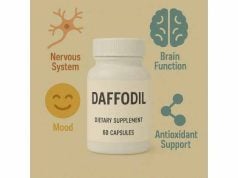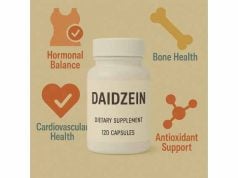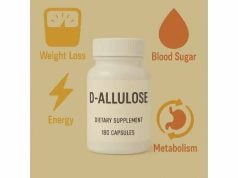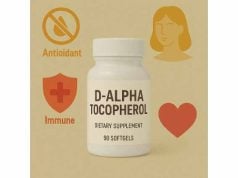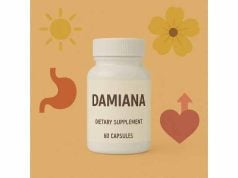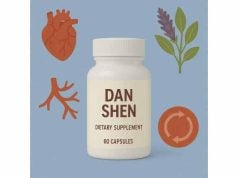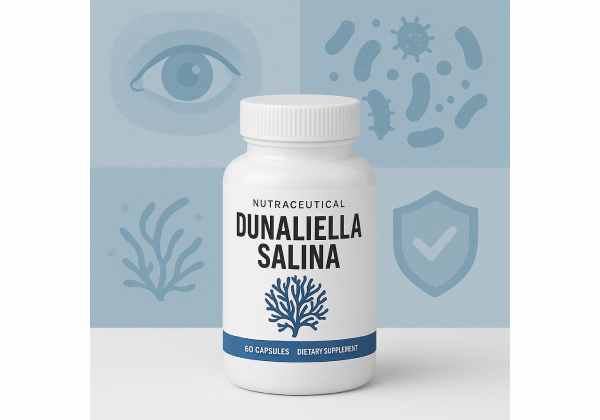
Dunaliella salina is a salt-loving microalga famous for its rich natural carotenoids—especially beta-carotene, plus the colorless carotenoids phytoene and phytofluene. These pigments act as antioxidants and as precursors to vitamin A, supporting normal vision, skin integrity, and immune function. Unlike synthetic beta-carotene, Dunaliella’s carotenoids naturally occur as a mix of isomers that may be better tolerated. The alga also contains bioactive lipids and small amounts of omega-3 fats that complement its antioxidant profile. Today, Dunaliella salina shows up in softgels, green powders, and topical skincare, often promoted for eye and skin health, antioxidant support, and overall wellness. This guide explains what the science does—and does not—say, how to choose quality products, practical dosing ranges, and who should avoid supplementation.
Essential Insights for Dunaliella salina Users
- Natural beta-carotene source that supports vitamin A status and antioxidant defenses.
- Early human data suggests topical Dunaliella extract can improve markers of photoaging; oral evidence for specific outcomes remains limited.
- Typical oral range: 3–12 mg beta-carotene per day from Dunaliella (≈1,500–6,000 mcg RAE).
- Safety note: current or former smokers and asbestos-exposed individuals should avoid beta-carotene supplements.
- Avoid supplementation if using retinoid medications; consider food sources instead during pregnancy unless advised by a clinician.
Table of Contents
- What is Dunaliella salina?
- What benefits are realistic?
- How to choose and use it
- How much should you take?
- Side effects, interactions, and who should avoid
- What the evidence says overall
What is Dunaliella salina?
Dunaliella salina is a free-swimming green microalga that thrives in hypersaline lakes and evaporation ponds. In these harsh, high-light, high-salt environments, the cells survive by stockpiling protective molecules:
- Carotenoids: notably beta-carotene (both all-trans and 9-cis isomers) plus phytoene and phytofluene. Beta-carotene is a provitamin A carotenoid that the body converts to retinol as needed. Phytoene and phytofluene absorb in the UV range and have emerging roles in photoprotection.
- Compatible solutes: primarily glycerol, which helps the cell balance osmotic stress in salty water.
- Bioactive lipids: a mix of polar lipids, triglycerides, and fatty acids including oleic acid (18:1 n-9) and alpha-linolenic acid (ALA, 18:3 n-3), and smaller amounts of eicosapentaenoic acid (EPA) in some strains.
Commercially, Dunaliella is cultivated in open raceway ponds or photobioreactors. Producers manipulate light, salinity, and nutrients to boost carotenoid accumulation and then extract the oleoresin (oil) or dry the biomass. Finished products typically come in three forms:
- Standardized oleoresin softgels providing a set amount of natural beta-carotene (for example, 5–10 mg per capsule), sometimes listing phytoene and phytofluene content.
- Dried biomass powders or capsules (green to orange), where carotenoid content varies by lot and is indicated on the label.
- Topical actives standardized to colorless carotenoids for skincare formulations.
From a nutrition standpoint, Dunaliella salina is most relevant as a natural source of beta-carotene that can help maintain adequate vitamin A status without delivering preformed retinol. That “regulated conversion” matters: healthy bodies convert beta-carotene to retinol based on need, lowering the risk of hypervitaminosis A that can occur with high retinol intakes. Even so, supplemental beta-carotene carries important caveats (discussed in the safety section) for people who smoke or used to smoke.
It is also worth distinguishing Dunaliella salina from other algae commonly found in supplements. Spirulina and Chlorella are typically used for protein and chlorophyll; Dunaliella is cultivated primarily for carotenoids and specific lipids. Because it grows in high-salinity environments, it is less prone to certain freshwater contaminants, but quality control is still essential.
In summary, Dunaliella salina is a targeted way to obtain natural carotenoids with additional minor lipids, packaged in either oral supplements or topical skincare. Its value rests on well-characterized chemistry and decades of safe food use, with modern studies refining what benefits to reasonably expect.
What benefits are realistic?
When evaluating Dunaliella salina, separate plausible, chemistry-driven effects from outcomes that require stronger human data. Here is a balanced look at common claims:
1) Antioxidant support and vitamin A status
Dunaliella’s beta-carotene can contribute to vitamin A requirements and bolster antioxidant defenses. In the body, beta-carotene quenches singlet oxygen and peroxyl radicals in lipid environments, complementing dietary vitamin E. Because conversion to retinol is regulated, beta-carotene from Dunaliella can help maintain epithelial integrity (skin and mucosa) and support immune function, especially in diets low in carotenoid-rich vegetables. People meeting vitamin A needs through food may notice little change in day-to-day wellness, but carotenoid sufficiency is a sound long-term investment in tissue resilience.
2) Skin health and photoprotection
Two lines of evidence matter. First, the colorless carotenoids phytoene and phytofluene absorb UV and may counter oxidative stress triggered by sunlight. Second, a small but well-controlled human study using a topical Dunaliella extract standardized to these colorless carotenoids reported improvements in markers related to glycation, redness, and wrinkle parameters under high sun exposure. That supports topical use for photoexposed skin. For oral use, Dunaliella’s beta-carotene contributes to systemic carotenoid pools, which correlate with some photoprotective effects, but targeted oral photoprotection data specific to Dunaliella remains limited compared with lutein, zeaxanthin, or astaxanthin literature.
3) Eye health
Historically, beta-carotene featured in older macular health formulations. Newer evidence favors lutein and zeaxanthin (which concentrate in the macula) over beta-carotene for reducing risk of progression in age-related macular degeneration, and beta-carotene was removed from updated formulas out of safety concerns for smokers and former smokers. Practically, Dunaliella can help maintain overall vitamin A status for night vision and epithelial health, but it is not the modern first-line carotenoid for macular pigment density.
4) Cardiometabolic support
Dunaliella salina contains a meaningful proportion of oleic acid and omega-3 ALA within polar lipid classes (e.g., glycolipids and betaine lipids). These lipids have anti-inflammatory and membrane-support roles, and preclinical work suggests favorable lipid indices (e.g., low atherogenic and thrombogenic indices) of Dunaliella lipid extracts. A handful of animal studies and exploratory human-relevant models show modest improvements in lipids or oxidative markers when Dunaliella biomass is included in the diet. For now, consider this a supportive, not primary, strategy alongside core diet and lifestyle changes.
5) Microbiome synergy
In vitro and animal data show Dunaliella biomass can promote growth or adherence of certain probiotic strains and modulate inflammatory signaling in gut cell models. These findings are intriguing for functional food applications (e.g., fermented dairy or plant-based yogurts), but human trials confirming clinically relevant microbiome shifts or symptom improvements are still scarce.
Bottom line: Dunaliella salina is a credible source of natural carotenoids and minor bioactive lipids. The strongest use-case today is supporting vitamin A status and antioxidant capacity, with topical evidence for photoexposed skin. Claims for specific disease modification require larger, longer, human trials. Use it to complement—not replace—dietary carotenoids from colorful vegetables and fruits.
How to choose and use it
Because Dunaliella products vary widely, smart label reading is essential. Use this checklist to choose well and use it effectively:
1) Match the form to your goal
- Softgels with oleoresin: Best when you want a defined dose of natural beta-carotene. Look for “from Dunaliella salina” on the label and a per-capsule milligram amount (for example, 6 mg beta-carotene). Some list phytoene and phytofluene content.
- Dried biomass capsules or powders: Suited for smoothies or functional food recipes. Carotenoid content depends on cultivation and harvest conditions; choose brands that disclose standardized beta-carotene per serving.
- Topical skincare: If your goal is photoexposed skin support, a cream or serum standardized to colorless carotenoids (phytoene and phytofluene) makes sense. These actives are typically included at 0.5–1 percent in a base cream; they do not stain skin or fabric.
2) Demand standardization and transparency
A high-quality Dunaliella supplement will specify:
- Source: “Natural beta-carotene from Dunaliella salina” (not “beta-carotene” without source).
- Assay: Milligrams of beta-carotene per serving; optionally, amounts of phytoene or phytofluene.
- Testing: Third-party results for identity, potency, oxidation markers, heavy metals, and microbial safety.
- Allergens and excipients: Many products are vegan and free of common allergens; verify capsule materials and added carriers (e.g., sunflower oil).
3) Time it with meals that include fat
Carotenoids are fat-soluble. Taking Dunaliella with a meal containing 10–15 grams of fat (for example, olive oil on vegetables, yogurt, or nut butter) can improve absorption. For powders, blending with yogurt, kefir, or a smoothie containing nut milk or avocado works well.
4) Pair wisely
- For eyes: Consider lutein and zeaxanthin as the primary macular carotenoids; beta-carotene is optional and may be avoided in people with a smoking history.
- For skin: Combining oral carotenoids with topical colorless carotenoids and broad-spectrum sunscreen makes sense.
- For antioxidant balance: A diet supplying vitamin E (nuts, seeds) complements carotenoid activity; supplements are rarely necessary if diet is strong.
5) Store and handle correctly
Light, oxygen, and heat degrade carotenoids. Keep containers sealed, away from heat and direct light. For powders, minimize air exposure by using desiccant-equipped tubs or single-serve sticks.
6) Know your regulations
Dunaliella is widely used as a natural colorant and supplement ingredient. Product categories and claims differ by region, so rely on reputable brands that follow regional labeling rules and quality standards.
Practical tip: If your multivitamin already provides several milligrams of beta-carotene, adjust any Dunaliella dose downward to avoid unnecessary duplication (and see the safety section if you have a smoking history).
How much should you take?
There is no universal “one-size” dose for Dunaliella salina, because products vary by standardization and goals differ. Use these pragmatic ranges centered on natural beta-carotene content, not raw biomass weight:
General wellness and antioxidant support
- 3–6 mg beta-carotene per day from Dunaliella with a fat-containing meal is a common, conservative range.
- This equals approximately 1,500–3,000 mcg RAE (retinol activity equivalents) from supplemental beta-carotene, since 1 mcg RAE = 2 mcg supplemental beta-carotene.
Filling dietary gaps in vitamin A
- If your habitual diet is low in orange and dark-green vegetables, consider 6–12 mg beta-carotene per day short-term while improving dietary patterns. Reassess after 8–12 weeks.
Skin-focused routines
- Topical: products standardized to colorless carotenoids typically use 0.5–1 percent Dunaliella extract in a cream or serum applied once or twice daily.
- Oral: stick with the general range above; combine with sunscreen and a plant-forward diet.
Children, pregnancy, and lactation
- Beta-carotene is a provitamin A and is not the same as preformed vitamin A (retinol). Even so, supplement needs vary in pregnancy and childhood. Aim to meet vitamin A through foods first (carrots, sweet potatoes, leafy greens, eggs, dairy as appropriate). Ask a clinician before adding a carotenoid supplement.
Upper limits and cautionary notes
- Several large trials found high-dose beta-carotene increased lung cancer risk in current and former smokers and certain high-risk groups. Modern guidance advises that smokers should avoid beta-carotene supplements, and general-population use should be limited to meeting vitamin A requirements.
- There is no established tolerable upper intake level (UL) for beta-carotene itself, but more is not better. Staying within 3–12 mg/day from supplements is a prudent ceiling for most non-smokers, given dietary carotenoids add to total intake.
How to translate labels
- If your capsule lists “10 mg natural beta-carotene (from Dunaliella salina)”, that provides about 5,000 mcg RAE.
- If it lists “Dunaliella salina powder 500 mg (standardized to 2% beta-carotene)”, that delivers 10 mg beta-carotene, the same calculation as above.
- If a label lists only “vitamin A” without breakdown, check whether vitamin A comes from retinyl palmitate/acetate (preformed) or beta-carotene. Only the beta-carotene portion relates to Dunaliella.
When in doubt, bring your supplement label to a clinician or pharmacist, especially if you have lung disease, a history of smoking, liver conditions, or you use medications that affect fat absorption.
Side effects, interactions, and who should avoid
Common and usually benign
- Carotenodermia: A harmless yellow-orange tint to the skin (especially palms and soles) after sustained high carotenoid intake. It fades when intake drops.
- Mild gastrointestinal upset: Nausea or loose stools in sensitive users, often mitigated by taking with food.
Important cautions
- Smokers, former smokers, and asbestos-exposed workers: Should avoid beta-carotene supplements, including those from Dunaliella. Multiple large randomized trials found increased lung cancer risk with high-dose beta-carotene in these groups, and modern safety evaluations uphold this caution.
- Liver disease and heavy alcohol use: Use only with medical guidance. While beta-carotene does not carry the same hepatotoxic risk as high retinol intake, overall vitamin A metabolism occurs in the liver.
- Pregnancy: Beta-carotene itself is not linked to teratogenicity the way high-dose retinol is, but avoid stacking multiple supplements that together exceed your needs. Prefer food sources or a prenatal chosen with your clinician.
- Dermatology retinoids: If you are taking isotretinoin or high-dose retinol products, adding beta-carotene is usually unnecessary. Discuss with your dermatologist.
- Malabsorption and fat-blocking agents: Orlistat, bile-acid sequestrants (e.g., cholestyramine), and certain pancreatic insufficiency regimens reduce carotenoid absorption. Dose at a different time or reconsider supplementation.
- Allergy: Rare with algae; discontinue and seek care if you develop hives, wheeze, or swelling.
Quality and contamination risks
Dunaliella is cultivated in saline settings and is not known for producing the cyanotoxins associated with some freshwater blooms. Still, poor-quality products can oxidize or be contaminated with heavy metals or microbes. Choose brands that publish third-party certificates of analysis.
Drug and nutrient interactions
- Do not combine Dunaliella with high-dose retinol supplements unless medically indicated; unnecessary duplication offers no benefit.
- Fat-soluble nutrient balance: Extremely high carotenoid intakes can compete with other carotenoids; balance your stack and get most pigments from food.
When to stop and seek advice
- Visual changes unrelated to lighting, persistent gastrointestinal symptoms, or unexplained rashes warrant discontinuation and evaluation.
- Anyone with a cancer history, lung disease, or complex medication regimens should involve their oncology or pulmonary team before starting.
Who should avoid entirely
- Current smokers, recent former smokers, and asbestos-exposed individuals.
- People unable to coordinate Dunaliella with needed medications that block fat absorption.
- Anyone advised by their clinician to avoid carotenoid supplements based on individual risk.
What the evidence says overall
What is well established
- Chemistry and composition: Dunaliella salina reliably accumulates substantial beta-carotene, plus phytoene/phytofluene and a portfolio of bioactive lipids (phospholipids, glycolipids, betaine lipids) containing oleic acid and omega-3 ALA. These profiles are reproducible and align with its ecological role in extreme light and salinity.
- Food and cosmetic use: Dunaliella-derived carotenoids have a long history in foods and skincare. Modern extraction and standardization enable predictable dosing for supplements and topical actives.
What is promising
- Topical skin outcomes: Controlled work with phytoene/phytofluene-rich Dunaliella extracts demonstrates improvements in glycation markers, redness, and wrinkle metrics during intense solar exposure—plausible given UV absorption and antioxidant activity of these colorless carotenoids.
- Functional lipidomics: Detailed lipidome profiling indicates favorable lipid quality indices and identifies specific polar lipid species with anti-inflammatory potential. This mechanistic base supports exploration of Dunaliella as a functional food ingredient beyond its pigments.
- Microbiome synergy: Dunaliella biomass can support certain probiotic species and modulate in vitro immune signals, suggesting rationale for pairing with fermented foods.
Where evidence is limited or mixed
- Oral, disease-specific endpoints: Large, high-quality randomized trials linking oral Dunaliella to reductions in cardiovascular events, specific skin diseases, or ophthalmic outcomes are not yet available. Extrapolating from general carotenoid research is reasonable for antioxidant support but does not prove disease modification.
- Macular health: Contemporary macular formulas emphasize lutein and zeaxanthin; beta-carotene has been deprioritized, particularly given the safety concerns for smokers and former smokers.
Practical takeaway
Use Dunaliella salina as a targeted carotenoid option when you want natural beta-carotene and related pigments, especially if your diet is low in colorful produce. Prioritize topical versions for photodamage goals and oral versions for general antioxidant and vitamin A support. Select standardized, tested products; respect the smoker caution; and combine with a plant-forward diet and sun-safe habits for the largest real-world benefit.
References
- Functional Properties of Dunaliella salina and Its Positive Effect on Probiotics 2022 (Systematic perspective)
- Bioactive Lipids in Dunaliella salina: Implications for Functional Foods and Health 2024 (Lipidomics study)
- A Dunaliella salina Extract Counteracts Skin Aging under Intense Solar Irradiation Thanks to Its Antiglycation and Anti-Inflammatory Properties 2022 (RCT and ex vivo)
- Vitamin A and Carotenoids – Health Professional Fact Sheet 2025 (Guideline)
- Scientific opinion on the tolerable upper intake level for preformed vitamin A and β‐carotene 2024 (Guideline)
Disclaimer
This guide is for educational purposes only and is not a substitute for professional medical advice, diagnosis, or treatment. Always speak with a qualified healthcare professional about your personal health, especially before starting any new supplement, changing your diet, or altering prescribed medications. If you are a current or former smoker, avoid beta-carotene supplements unless your clinician advises otherwise.
If you found this helpful, please consider sharing the article with friends or colleagues on Facebook, X, or your preferred platform, and follow us for future evidence-based guides. Your support helps us continue producing high-quality resources.

